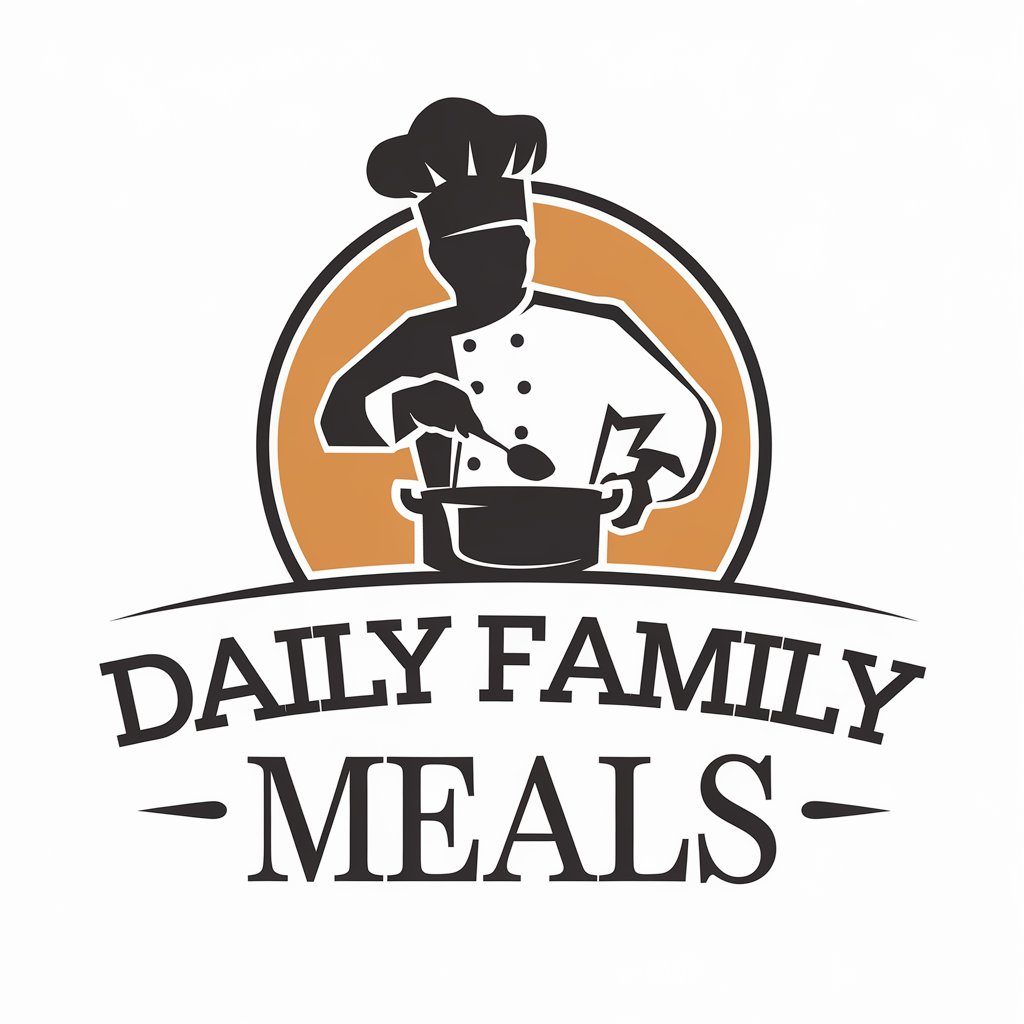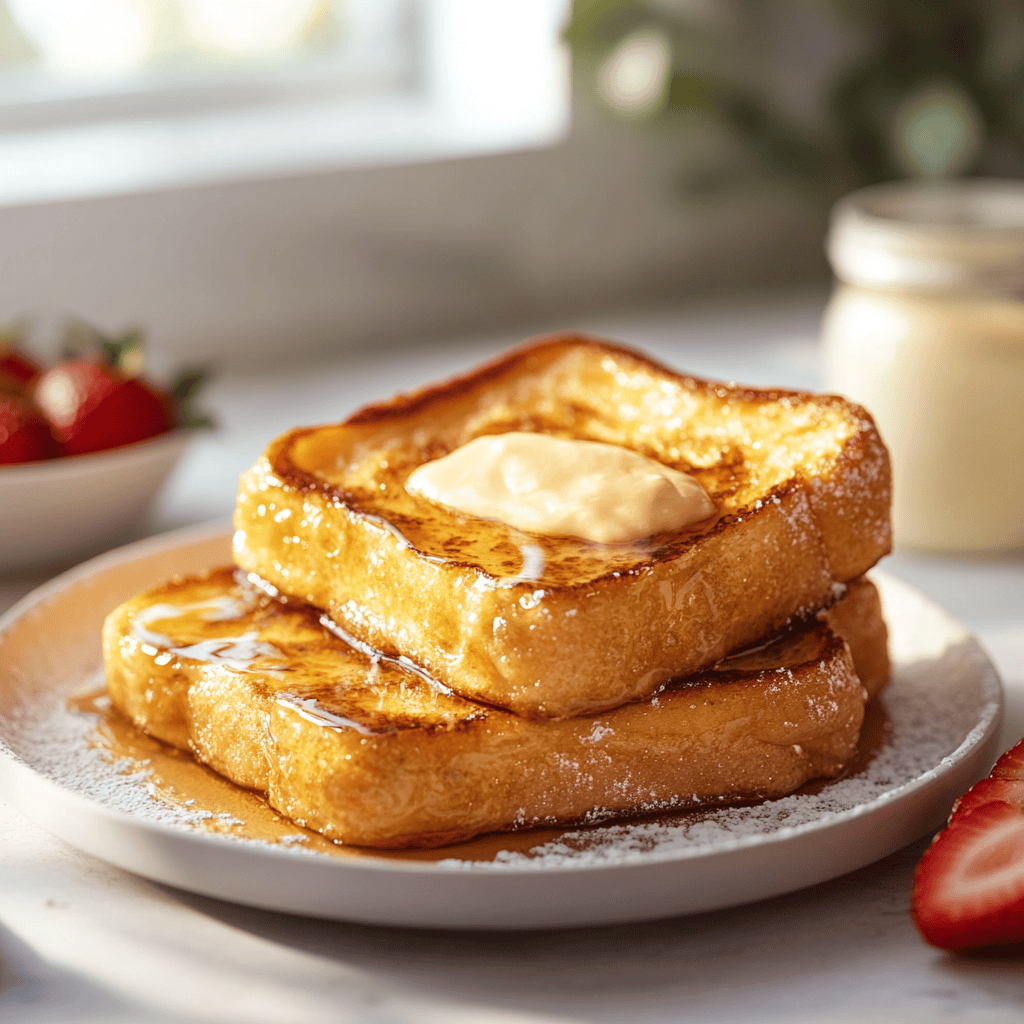Quick Overview
French toast is a classic breakfast dish that brings joy to many tables around the world. This delightful treat is not only simple to prepare but also incredibly versatile. Whether you enjoy it plain, topped with fruits, or drizzled with maple syrup, French toast is sure to satisfy your cravings. In this article, we will guide you through the steps of making the perfect French toast at home. With just a few ingredients and some straightforward instructions, you can create a meal that everyone will love.
Ingredient Breakdown
Bread
For this recipe, you will need 4 slices of thick-cut bread, like brioche or challah. These types of bread absorb the egg mixture beautifully and yield a rich texture when cooked.
Eggs
You will require 2 large eggs. The eggs provide structure and richness to the dish. They are essential for binding the other ingredients and creating that classic custardy texture.
Milk
Use 1 cup of whole milk for this recipe. The milk adds creaminess to the egg mixture and helps achieve a smooth consistency. You can substitute it with almond or oat milk if preferred.
Sugar
Add 1 tablespoon of granulated sugar. This ingredient enhances sweetness and balances flavors in your French toast. You can adjust the amount based on your taste preference.
Cinnamon
Incorporate ½ teaspoon of ground cinnamon for flavor. Cinnamon gives warmth and depth to your dish while creating an aromatic experience as it cooks.
Vanilla Extract
Use 1 teaspoon of pure vanilla extract. The vanilla adds a lovely sweetness and enhances all other flavors in your French toast.
Butter
You will need 2 tablespoons of unsalted butter for frying. Butter creates a beautiful golden crust while adding richness to each slice.
Step By Step Recipe: French Toast
Prepare the Egg Mixture
In a medium-sized bowl, whisk together 2 large eggs, 1 cup of milk, 1 tablespoon of granulated sugar, ½ teaspoon of ground cinnamon, and 1 teaspoon of vanilla extract until well combined. Ensure there are no lumps in the mixture so that each slice absorbs evenly when dipped.
Dip the Bread Slices
Take each slice of thick-cut bread and dip it into the egg mixture one at a time. Allow each side to soak for about 15 seconds; this ensures every slice is fully coated without becoming overly soggy.
Heat the Pan
In a non-stick skillet or griddle over medium heat, melt 2 tablespoons of unsalted butter until it starts bubbling slightly. This indicates that your pan is at the right temperature for cooking without burning the butter.
Cook the Bread
Place two soaked slices in the skillet once the butter has melted completely. Cook them for about 3-4 minutes per side until they’re golden brown and slightly crispy on the edges. Ensure you do not overcrowd the pan; cook in batches if necessary.
Serve Immediately
Once cooked, remove slices from the skillet and serve immediately while warm. You can top them with powdered sugar, maple syrup, fresh fruits, or whipped cream according to your preference.

Serving and Storing Tips
Serve Fresh
French toast tastes best when served immediately after cooking while it’s still warm. If you’re preparing multiple batches, keep them warm in an oven set at low heat until ready to serve.
Storing Leftovers
If you have any leftovers, store them in an airtight container in the refrigerator for up to three days. Reheat them in a toaster or skillet before serving again for optimal texture.
Freezing Options
You can also freeze any leftover slices by placing parchment paper between each slice before wrapping them tightly in foil or plastic wrap. They can be stored in the freezer for up to one month.
By following these guidelines and using fresh ingredients, you can enjoy delicious homemade French toast any day of the week!
Mistakes to avoid
One common mistake when making French Toast is using the wrong type of bread. Thick slices of bread, like brioche or challah, work best. Thin bread can become soggy and lose its structure during cooking.
Another mistake is not letting the mixture soak long enough. Quick dips in the egg mixture may leave the bread dry. Instead, allow each slice to absorb the liquid for a minute or two for optimal flavor and texture.
Overcooking is also an issue. French Toast should be golden brown on the outside while remaining soft on the inside. Keep an eye on your heat level to avoid burning.
Not seasoning your egg mixture is a missed opportunity. A pinch of salt and a dash of vanilla can enhance the taste significantly. Avoid bland flavors by incorporating these simple ingredients.
Finally, skipping toppings can lead to a less enjoyable dish. Fresh fruits, syrup, or whipped cream can elevate your French Toast experience. Don’t overlook these finishing touches that add both flavor and visual appeal.

Tips and tricks
When preparing French Toast, use day-old bread for the best results. Stale bread absorbs the egg mixture better than fresh bread, which tends to get mushy. If you only have fresh bread, consider lightly toasting it before dipping.
Incorporate spices into your egg mixture for added flavor. Cinnamon is a classic choice that complements the sweetness of syrup perfectly. Nutmeg or even cardamom can bring unique notes to your dish as well.
Pay attention to cooking temperature; medium heat works best for cooking French Toast evenly. High heat may burn the outside while leaving the inside undercooked. Adjust your stovetop heat accordingly and flip carefully when golden brown.
Experiment with different milk options in your egg mixture. Whole milk provides richness, while almond or oat milk offers a lighter alternative that still tastes delightful. Each variation gives a new twist to your classic recipe.
Lastly, consider making a larger batch for meal prep or brunch gatherings. You can keep cooked slices warm in an oven set at low temperature until serving time. This way, everyone enjoys hot French Toast together without fuss.
Suggestions for French Toast
For a delightful twist, try adding chocolate chips to your batter or on top before cooking your French Toast. The melted chocolate adds sweetness and richness that pairs well with traditional maple syrup.
If you enjoy fruit flavors, consider blending in mashed bananas into your egg mixture for natural sweetness and moisture. You can also top your finished dish with fresh berries or sliced peaches for added freshness.
For those who prefer a savory take, experiment by adding cheese or herbs to your batter mix. Feta with spinach creates an interesting breakfast option that steps away from sweetness but remains deliciously satisfying.
Consider trying stuffed French Toast as another variation. Spread cream cheese mixed with fruit preserves between two slices of bread before dipping into the egg mixture for an indulgent treat that makes breakfast extra special.
Lastly, don’t forget about garnishing! A sprinkle of powdered sugar adds visual appeal and sweetness without overwhelming the dish’s flavor profile.

FAQs
What kind of bread is best for French Toast?
Brioche or challah are excellent choices because they are sturdy and slightly sweet, providing great texture and flavor when cooked. These breads absorb the egg mixture well without becoming overly soggy, resulting in perfect French Toast every time.
Can I make French Toast ahead of time?
Yes! You can prepare it ahead by assembling all ingredients in advance and storing them separately until you’re ready to cook. Alternatively, cook multiple pieces at once and keep them warm in an oven set at low temperatures until ready to serve.
How do I prevent my French Toast from getting soggy?
To avoid sogginess, use stale bread as it absorbs the liquid better without falling apart during cooking. Additionally, do not soak each slice too long—just enough time for absorption will yield perfect results without excess moisture.
Can I freeze leftover French Toast?
Certainly! Let leftover slices cool completely before wrapping them tightly in plastic wrap or placing them in airtight containers. They can be frozen for up to three months; simply reheat in an oven or toaster when ready to enjoy again.
What toppings go well with French Toast?
Popular toppings include maple syrup, powdered sugar, fresh fruits like strawberries or blueberries, whipped cream, and even yogurt for added creaminess. Feel free to mix and match according to personal preference!
Is it necessary to add vanilla extract?
While it’s not essential, vanilla extract enhances overall flavor significantly! Just a teaspoon mixed into your egg batter will impart warmth and depth that complements other flavors beautifully in this classic breakfast dish.
Summary
In summary, creating perfect French Toast requires careful attention to detail—from selecting suitable bread types to avoiding common mistakes during preparation and cooking phases. Incorporating tips like using day-old bread or experimenting with spices will elevate your dish further while suggestions for toppings provide endless possibilities for customization!

